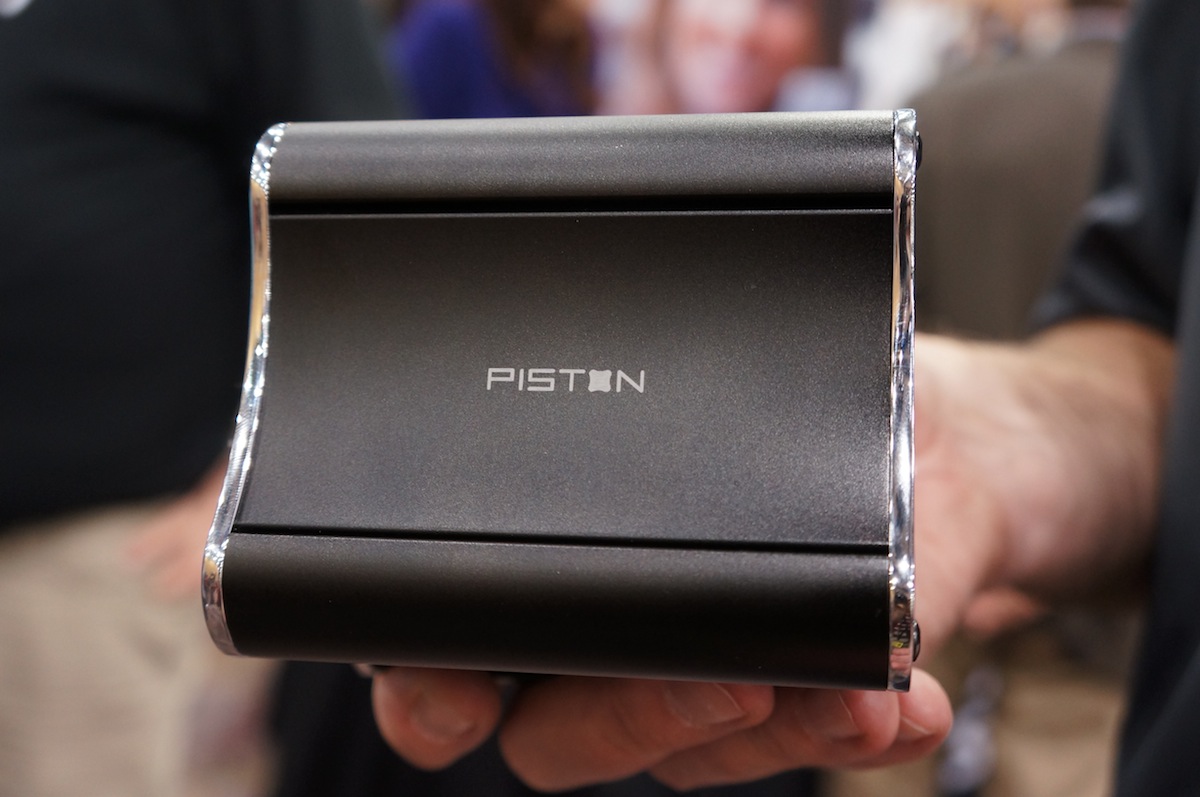Gabe Newell: PC-to-TV Streaming Will Soon Be Standard
Gabe Newell speaketh, and he commands that the PC will take over the living room in three tiers.
After sparring on stage with director / producer J.J. Abrams on Wednesday at the DICE 2013 summit, Valve Software bossman Gabe Newell presented the Day 2 keynote entitled "A View on Next Steps". He said that PC-to-TV streaming will become standard on future TV sets and will even pave the way to cheap, high-quality PC gaming in the living room.
Newell predicted that the PC infiltration will come in three tiers. For starters, there's the "good" tier comprising of a traditional PC dedicated to in-home streaming. It would be good enough to pump streaming video to any HDTV in the house without any latency or hiccups, and should cost around $100 at first then eventually drop down to zero.
"This will just become a standard feature of every television, the latency is basically nonexistent, so we really believe it's a very low-cost pathway [to PC games in the living room] and a very high-quality path," he said, seemingly describing a PC-based high-powered TV accessory in a standalone HTPC-like form factor that can't be modified.
The next tier, AKA "better", was described as a PC crammed into a console form factor and sold at a console price. That in itself seemed to be a Steam Box reference, even adding that there won't be anything magical about the hardware and consequently making it an affordable investment for the living room. Indeed the Steam Box aka "Piston" will reportedly have a console price, but will be modular and allow users to easily upgrade the device with new components.
He hinted that this particular tier may be threatened by Apple, a fear that has spread throughout the gaming sector for years. "Apple has this huge unit advantage," he said. "Smartphones and tablets are really getting into these huge numbers and Apple has a much more natural progression into the living room with fundamentally industry-to-industry competitive advantages that I think are more threatening to the PC moving into the living room than anything that would be happening on the console side."
He also pointed out that Apple's upgrade cycle isn't quite as "lumpy" given that company releases newer models each year and offers consumers and developers a smooth progression from one iPhone model to the next rather than telling them to throw everything away and start over. Though this is clearly beneficial to both consumers and developers, it presents a serious challenge to those who work in the PC/console gaming industry.
He moved on to describe the "best" scenario which was essentially a standalone gaming desktop that user's can upgrade as usual. "PCs have always scaled really well," he added. "If a customer wants more 3D performance, they can get it. If they want more storage for video, they can get it. So the sky is the limit. If you want a $4000 living room box, I'm sure there are lots of PC vendors who are going to send that to you."
Get Tom's Hardware's best news and in-depth reviews, straight to your inbox.
Finally he discusses the difference between in-home game streaming and cloud gaming, the latter of which he admits to being skeptical about. His full reasoning can be seen in the 35 minute presentation below.

Kevin Parrish has over a decade of experience as a writer, editor, and product tester. His work focused on computer hardware, networking equipment, smartphones, tablets, gaming consoles, and other internet-connected devices. His work has appeared in Tom's Hardware, Tom's Guide, Maximum PC, Digital Trends, Android Authority, How-To Geek, Lifewire, and others.
-
kcorp2003 Gabe you point out Apple is a competitor/"threatened" and yet your using their tablet to give your keynote. at least use an android one :)Reply -
boju Obviously hes playing Half-Cards on that thing.Reply
Hes full of surprises, very keen on getting the pc experience fully incorporated into the lounge.
Although Lots of people are already doing so with htcp's or even some modifications to TV units with some little planning for bigger cases. I guess having a smaller unit like that X thing i keep seeing would help a lot for those with not a lot of room on their TV units and a bonus if this obliterates any console at an attractive price in the near future.
If it goes well for it, Steam will probably be the best experience drm free gaming platform adding to what it is already now.
Watch out consoles, gaming developers will soon realize you're not the answer to piracy anymore. Feel sorry for Steam though, if it is successful in bringing pc-console to lounge, then they might have a hacking fight on their hands.
Ps. Hoping its not too expensive upgrading the parts eligible. -
goodguy713 After watching that presentation i think he has a good perspective. I think that the user interface that's missing is the augmented reality aspect. As far as virtual user interfaces go. for instance take the concept from a japanese anime called sword art online .. when and if something like that is possible then it would be a game changer for the industry. as far as steam box is concerned i think as long as its an upgradeable device then that should be a huge benefit / advantage over traditional consoles especially if people can play / use user generated content unlike most current gen consoles.. its pretty exciting.Reply
-
ojas ReplyThe next tier, AKA "better", was described as a PC crammed into a console form factor and sold at a console price. That in itself seemed to be a Steam Box reference
Lol not only steam box, it's a next-gen console reference: They're all PCs! :D -
tomfreak make RJ45 cable able to send Audio Video. AV these days is basically digital signal. We dont need HDMI, HDMI is redundant expensive, and short range & USELESS, require royalty fees.Reply
Making network cable AV streaming capable as standard will also make all Wi-fi product able to send video wirelessly.
-
thecolorblue "streaming" video within a home network is no problem using a wired connection and a decent router and a fanless minimalistic htpc having nothing but 4 gig ram, tiny ssd for the OS and an i3 cpu with integrated graphics. no new gadgetry needed.Reply
-
thecolorblue Tomfreakmake RJ45 cable able to send Audio Video. AV these days is basically digital signal. We dont need HDMI, HDMI is redundant expensive, and short range & USELESS, require royalty fees. Making network cable AV streaming capable as standard will also make all Wi-fi product able to send video wirelessly.i already "stream" massive HD video files over standard network cable and have never once experienced any troubles. Wi-fi is also able to send video (translate any file type) with no problems ... except bandwidth becomfes an issue.Reply
if you want this today all you needis a gigabit router, a quite bare-bones htpc connected to your router by standard networking cable, a second computer with the media files on it. connect this htpc to a audio DAC via USB cable... connect DAC to amplifier... To speakers... 3 foot HDMI cable from HTPC to TV. TV = htpc monitor.
share the folder from your media file containint workstation, desktop, home server etc. Then go to your minimalistic HTPC, access the shared folder, double-click the file.
rather than use windows media player which spys on you try VLC. It's free, it's not spyware, it runs waay smootherc than Windows media player... and again it doesn't fu***** spy on you.
problem solved, works fantastically.
no new inventions needed. -
hiruu Gabe is an interesting guy and his insights are usually good information to ponder on. I 100% agree with him, on the shift of the PC to the living room. Game streaming is a none starter imho, for the exact reason he says…the burden on networks is going to be too high, and when you start looking at the models for future transmission rate cost, it is not feasible. I equally think his non-PC steambox is a clownish attempt as well…throwing another ecosystem…supposedly free, is ridiculous. Why would someone pay hundreds more than console for a thing that is locked in functionality? I like open systems, but I like defined open system, which is what the PC is. Microsoft gets lots of hate, but they basically build the workshop, and support it, allowing game developers to innovate for it, not making anything directly off this investment. I DON’T believe that Win 8 is a threat to this model, but I Microsoft interest in blocking the EXACT threat that Gabe speaks to with Apple’s iOS seeping into the living room. When F2P games can get 50 million downloads in now time, that is a threat, and I don’t blame them from engaging to counter that. Gabe and Valve did pretty darn well on Left 4 Dead, and they had freedom there…Steam has some control measures, just as XBL does…an open system with defined parameters!Reply -
bucknutty I think TomFreak ment use cat5/6 in stead of HDMI on new tvs. Why pay for a new fancy licensed digital format when a cat5/6 has the bandwidth to do the same job.Reply -
bllue This is nothing new. For years we've had streaming devices such as Roku, game consoles, etc. Everybody praises this guy as if he's the first to come up with the concept, when in fact it has existed for many years. Nowadays you can even use your tablets and smartphones to stream media to your TV. Or you can hook up your desktop or laptop to the TV with HDMI to achieve the same results as the Steam Box (or Piston) at a lower pr ice. Piston is $1000. You can build a desktop system of equal horsepower for half that.Reply
